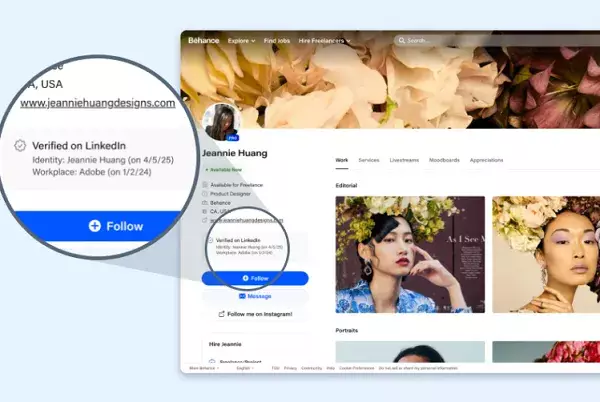In a bold move to enhance professional credibility, LinkedIn is stepping up its ID verification game. Recently, the platform declared its intention to allow third-party applications to showcase its verification markers. This initiative doesn’t just broaden the horizons for identity verification—it represents a significant shift in how professionals establish trust in digital interactions. By integrating ID verification markers across various platforms, LinkedIn is not merely adding a layer of assurance; it’s building an ecosystem where accountability and authenticity thrive.
Launched in 2023, LinkedIn’s free ID confirmation system initially aimed to bolster user identity verification, allowing members to showcase a confirmation tick next to their profiles. Far from the superficial celebrity checkmarks found on other platforms, LinkedIn’s approach is deeply rooted in the professional realm, emphasizing the importance of real connections. The company’s partnership with local ID verification providers in various regions demonstrates its commitment to expanding this crucial feature, signaling that authentic professional interactions can become a norm rather than an exception.
Integration with Partner Platforms: A Game Changer
The recent news that software giant Adobe is integrating LinkedIn ID verification into its offerings introduces a whole new dynamic. This collaboration not only augments the value of LinkedIn’s verification system but also alleviates the burden on partners like Adobe to develop their own identity verification processes. Creators using Adobe’s Content Authenticity app and Behance portfolio will proudly display a “Verified on LinkedIn” badge, showcasing their authenticity to potential clients and colleagues.
This partnership highlights a critical trend—we are witnessing a shift where digital identity is increasingly associated with quality. By enabling such integrations, LinkedIn allows professionals to present a reliable and verified identity across various platforms. This move could potentially revolutionize how professionals market their skills, thereby attracting more meaningful connections and opportunities.
Combatting Spam and Impersonation: A Necessary Step
In a world where spam accounts and impersonation are rampant, LinkedIn’s ambitious project to expand ID verification could play a pivotal role. As reported, a staggering 80 million users have voluntarily confirmed their identities on the platform. An expanding network of verified profiles not only strengthens individual trust but also acts as a barrier against malicious entities looking to exploit the professional landscape.
The conversation around universal verification has been ongoing, particularly as it relates to accountability in online interactions. If social media platforms demanded real identification, would users tread more carefully with their commentary? While the balance between anonymity and accountability is delicate, LinkedIn’s forward-thinking initiative offers a practical solution. It allows users to identify as real individuals—crucial in building legitimate business relationships—while preserving an element of privacy that many still regard as paramount.
The Role of Anonymity in Digital Identity
However, the topic of verification isn’t black and white. Users often cherish their anonymity, creating a conflict between those seeking to foster trust through verifiable identities and those who wish to maintain a distance in their digital interactions. The challenge lies in providing options that respect user choices without undermining accountability. LinkedIn’s model suggests that a middle ground exists. By employing third-party verification systems, users can opt-in to establish credibility without mandating invasive procedures across the board.
This nuanced approach might also serve as a model for regulatory bodies to consider. The journey to universal ID verification could, in fact, be less about enforcing stringent regulations and more about crafting partnerships that enhance trust.
Looking Ahead: The Intersection of ID Verification and Digital Ownership
As LinkedIn continues to enhance its verification processes, it also plans to expand support for Adobe’s “Content Credentials.” This initiative enables creators to embed ownership data into their digital content, establishing a novel way to claim authorship in an age where AI-generated fakes proliferate. The integration of ID verification with digital ownership is not just an innovative trend; it symbolizes a necessary evolution in protecting the authenticity of original content.
LinkedIn’s commitment to bolstering identity validation demonstrates its dedication to fostering a trustworthy and professional online community. By integrating its ID verification system across multiple platforms, LinkedIn is paving the way for a future where authenticity and professional credibility are paramount. As the lines blur between reality and the digital world, initiatives like these could become the driving force behind the future of online interactions, encouraging responsible behavior and solidifying professional relationships.

